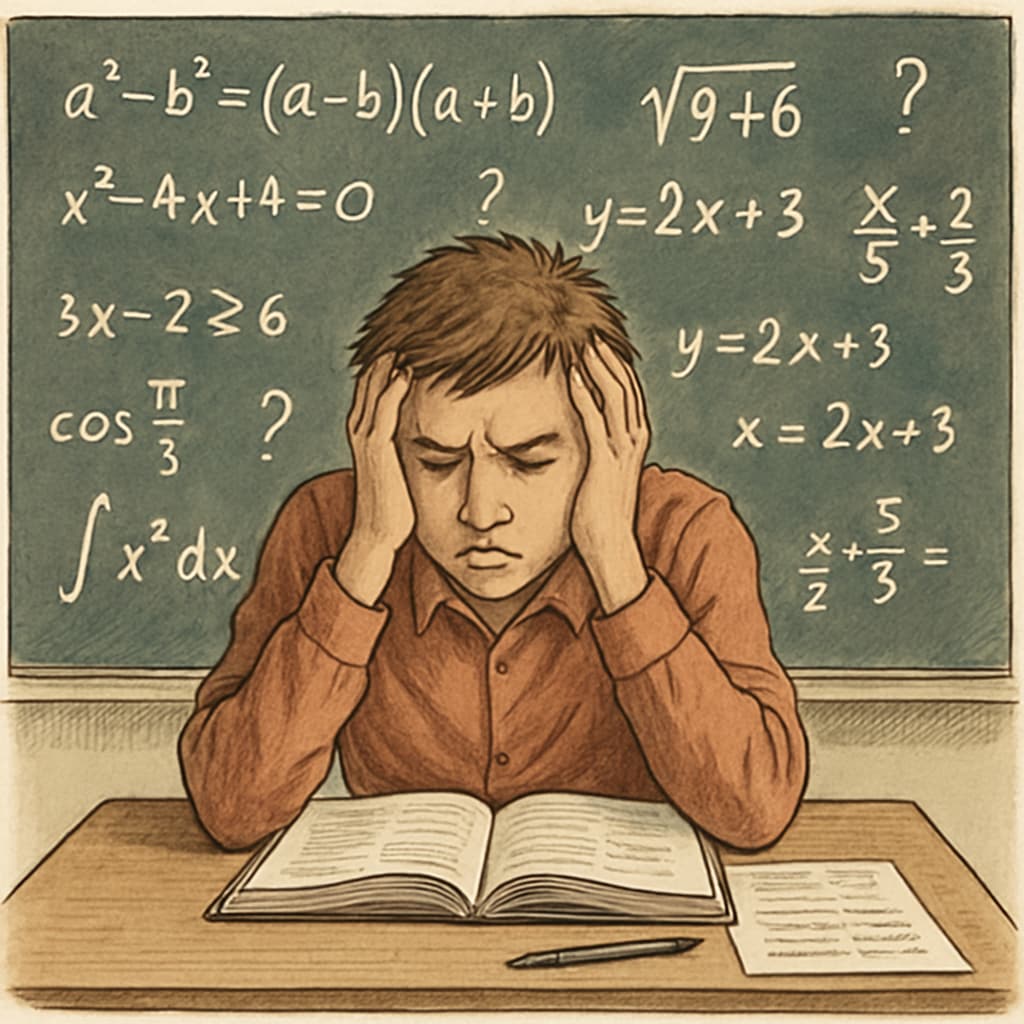Many high school students face math anxiety, exam stress, and multiple-choice difficulties, which can negatively impact their academic performance. These challenges often arise from a combination of psychological factors, ineffective study habits, and the unique pressure of timed exams. However, with targeted strategies, students can overcome these obstacles, rebuild their confidence, and improve their math skills.
Understanding the Roots of Math Anxiety and Exam Stress
Math anxiety is a psychological condition that triggers feelings of fear or nervousness when dealing with mathematical tasks. According to studies, this condition is often linked to past negative experiences, such as poor grades or discouraging feedback from teachers. Additionally, exam stress can amplify these feelings, especially during high-pressure situations like standardized tests or final exams.
Multiple-choice questions add another layer of complexity, as they require not only a correct calculation but also careful reading and interpretation of choices. Students often feel overwhelmed by the fear of selecting the wrong option, leading to second-guessing and wasted time.

Practical Strategies to Overcome Math Anxiety and Exam Pressure
To address these challenges, students can adopt both psychological and academic strategies. Below are actionable tips:
- Develop a Positive Mindset: Replace negative self-talk with affirmations like “I am capable of solving math problems” or “Mistakes are opportunities to learn.”
- Practice Relaxation Techniques: Use deep breathing, mindfulness, or visualization exercises to calm nerves before studying or taking exams.
- Prepare Effectively: Regular practice is key. Use practice tests and timed exercises to simulate real exam conditions.
- Break Problems into Steps: Simplify complex problems by breaking them into smaller, manageable parts.
- Focus on Understanding Concepts: Instead of rote memorization, aim to understand the “why” behind mathematical formulas and methods.
These techniques can help students shift their focus from fear to problem-solving, thereby reducing anxiety and improving exam performance.

Mastering Multiple-Choice Questions
Multiple-choice questions require a strategic approach to maximize accuracy and minimize confusion. Here are some tips:
- Read Carefully: Pay attention to keywords in the question, such as “not” or “all,” which can change the meaning.
- Eliminate Wrong Answers: Narrow down options by eliminating clearly incorrect choices to improve your odds.
- Guess Strategically: If unsure, make an educated guess rather than leaving the question blank.
- Check Your Work: Review calculations and ensure your answer aligns with the question requirements.
By practicing these methods, students can approach multiple-choice questions with greater confidence and efficiency.
Building Long-Term Confidence in Math
Overcoming math anxiety and exam stress is not just about short-term fixes—it requires a shift in mindset and habits. Here are additional long-term strategies:
- Seek Help Early: Don’t hesitate to ask teachers or tutors for clarification on challenging concepts.
- Join Study Groups: Collaborative learning can make math less intimidating and provide new perspectives.
- Celebrate Small Wins: Recognize and reward yourself for progress, no matter how small.
With consistent effort and the right support system, students can transform their approach to math and achieve lasting success.
Readability guidance: Use concise paragraphs and lists to enhance readability. Incorporate transition words like “however,” “in addition,” and “for example” to ensure smooth flow. Avoid excessive passive voice and lengthy sentences.


